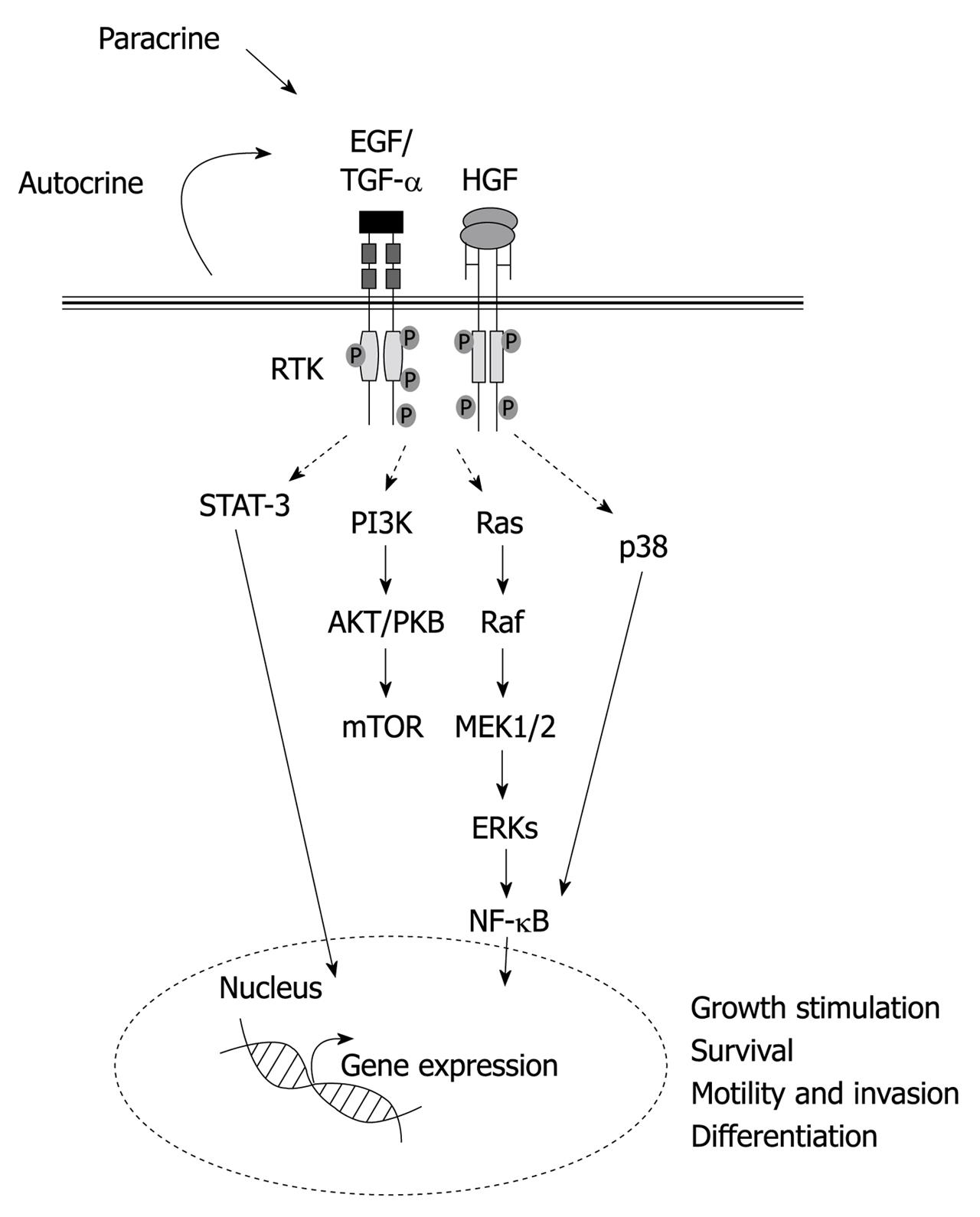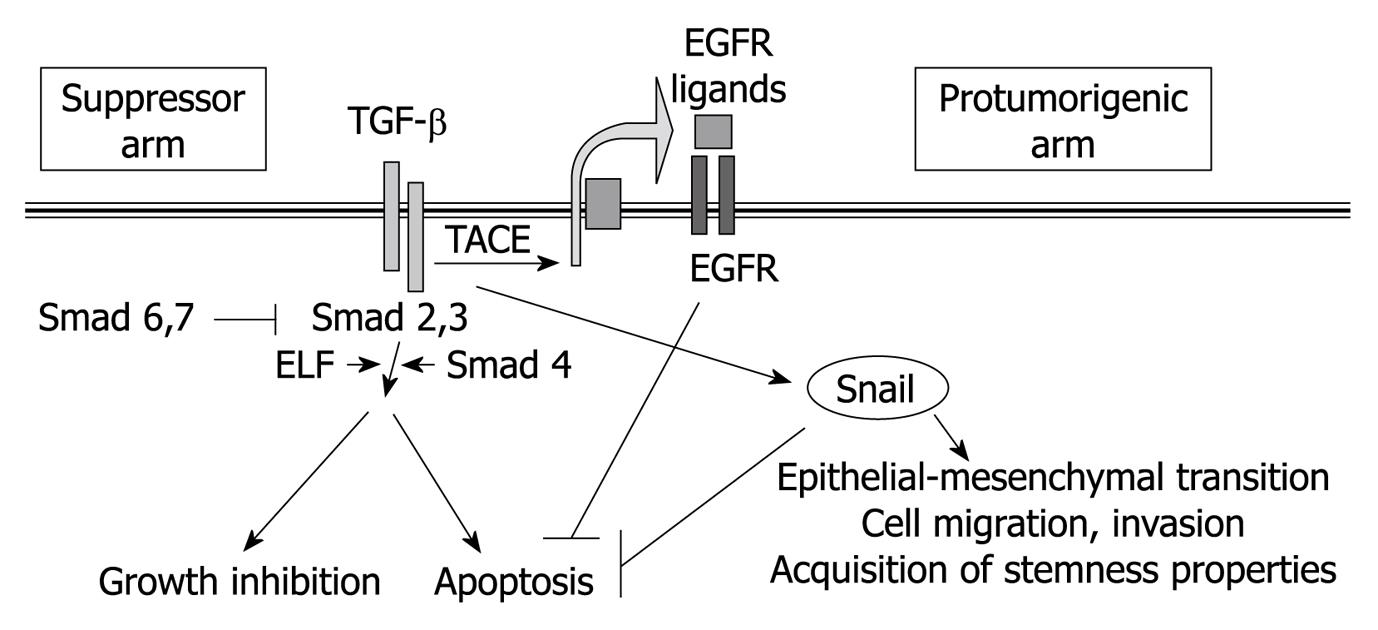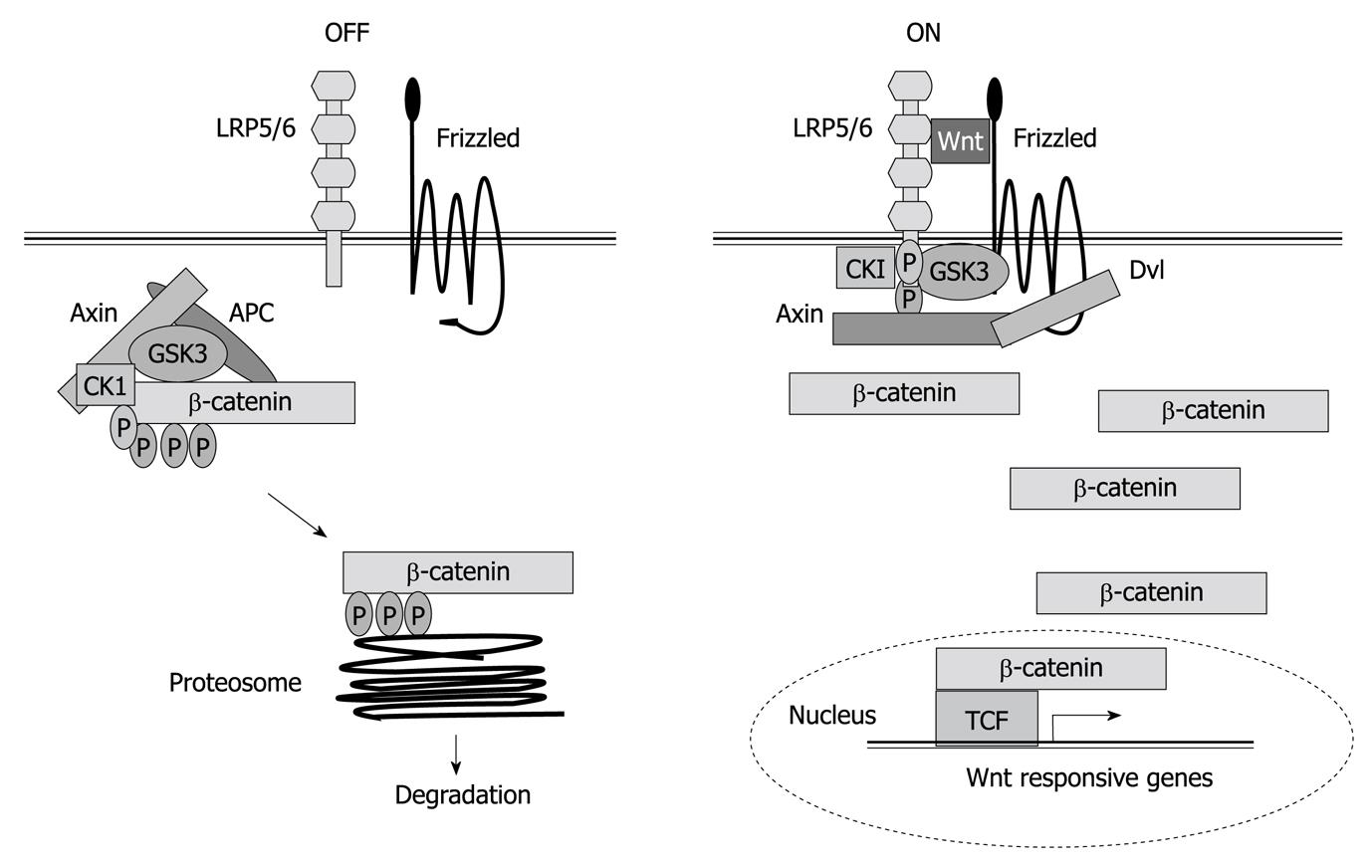Copyright
©2010 Baishideng Publishing Group Co.
World J Gastroenterol. Nov 7, 2010; 16(41): 5148-5161
Published online Nov 7, 2010. doi: 10.3748/wjg.v16.i41.5148
Published online Nov 7, 2010. doi: 10.3748/wjg.v16.i41.5148
Figure 1 Schematic illustration of the major signaling pathways and biological activities induced by hepatocyte growth factor and epidermal growth factor receptor ligands in liver progenitor cells.
HGF: Hepatocyte growth factor; EGF: Epidermal growth factor; TGF: Transforming growth factor; STAT: Signal transducer and activator of transcription; PI3K: Phosphoinositide 3-kinase; NF-κB: Nuclear factor κB; mTOR: Mammalian target of rapamycin; MEK: Mitogen-activated protein kinase kinase; ERKs: Extracellular-signal-regulated kinases.
Figure 2 Overview of the major signaling pathways, and their cellular effects, induced by transforming growth factor-β in liver cells.
TGF: Transforming growth factor; EGFR: Epidermal growth factor receptor; ELF: Embryonic liver fodrin; TACE: Tumor necrosis factor-converting enzyme.
Figure 3 Wnt/β-catenin signaling.
Left figure shows how β-catenin is pushed to degradation in the absence of Wnt ligand. Right figure shows how in the presence of Wnt, β-catenin regulates gene expression. TCF: T-cell factor; LRP: Low density lipoprotein receptor-related protein; APC: Adenomatous polyposis coli; CK1: Casein kinase 1; GSK: Glycogen synthase kinase.
- Citation: Sánchez A, Fabregat I. Growth factor- and cytokine-driven pathways governing liver stemness and differentiation. World J Gastroenterol 2010; 16(41): 5148-5161
- URL: https://www.wjgnet.com/1007-9327/full/v16/i41/5148.htm
- DOI: https://dx.doi.org/10.3748/wjg.v16.i41.5148











